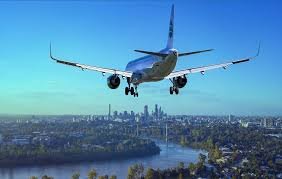Visiting multiple countries might sound expensive, but the right itinerary can cost less than a simple return ticket. Before locking in dates and destinations, it helps to understand how airlines price routes and where travellers often leave value on the table. To get the best multi-city flight deals from Australia without doubling back or overpaying for peak routes, you need to think like the booking system and plan each step strategically.
How Airlines Price These Routes
Contrary to what many people assume, ticket prices are not based purely on distance. Airline systems consider fare classes, regional taxes, cabin configurations, and stopover patterns. If one segment runs at lower demand or attracts fewer airport fees, it can reduce the overall fare.
For example, swapping London for Madrid or flying into Los Angeles before New York might cut your fare without reducing the trip’s quality. The change works because the pricing engine rewards efficiency, even if the route appears longer on a map.
Airlines also have “sweet spot” connections where they want to fill seats on less popular legs. Including one of these in your itinerary can push the total price down. So, rather than building a trip that looks logical from your perspective, consider how the system’s algorithm might reward certain sequences.
When to Book and Why Timing Shapes Cost
There is no universal rule for finding the lowest multi-city fares, but patterns do exist:
- Long-haul trips that include two or more continents often price better four to six months in advance.
- Avoid booking each leg individually – bundling usually keeps taxes and carrier fees lower.
- Travel mid-week or during shoulder seasons to unlock better cabin availability.
- Watch for seasonal promos – some fares drop closer to departure when airlines run sales outside school holidays.
If you are flexible, track fares for a few weeks before committing. Sometimes, waiting for a targeted promotion can save hundreds, particularly on less competitive routes.
How to Structure Your Stops for Better Value
If your trip includes several countries, the order and direction matter more than you might think. A few reliable strategies:
- Move in one direction – westward or eastward – to avoid carrier surcharges that apply when backtracking.
- Avoid looping back to a city you have already visited; this often triggers extra taxes and airport fees.
- Stick to logical regional progressions. For example, Asia → Europe → North America works better than jumping back and forth between regions.
Grouping destinations by region also allows you to use shorter, cheaper flights within each area. This approach maximises value without adding unnecessary transit time.
Fees and Extras That Catch People Off Guard
Baggage allowances, layover durations, and overnight stopovers can quickly inflate costs. Budget carriers within Europe or Asia may have strict carry-on limits, and checked baggage can cost as much as the fare itself.
Transit visas, airport taxes, and long layovers that require hotel stays also add to your budget. For instance, a layover in Doha might look efficient on paper, but if it involves a 14-hour wait and a hotel bill, you may be better off flying through a less popular hub with shorter connections.
Before you book, check:
- Passport expiry dates.
- Luggage allowances for each airline.
- Cancellation or change terms.
- Local entry requirements for every stop.
Being thorough at this stage can save significant money and stress later.
Better Tools for Complex Trips
Standard flight search tools often miss valuable combinations. Platforms that allow true multi-leg inputs can return better results, but even they have gaps. Changing just one city or reordering your stops can drop the total fare by hundreds of dollars.
Specialist booking services that focus on multi-city and round-the-world travel can uncover:
- Carrier combinations you will not see on public search engines.
- Timing advantages that align with seasonal fare drops.
- Regional pairings that reduce taxes or fees.
These advantages are hard to replicate without insider knowledge and direct booking tools used by travel professionals.
Why Expert Help Makes a Difference
Multi-city flight deals tend to reward planning that follows airline logic. While you do not need to memorise every pricing rule, having access to someone who works with these routes every day can save you time and money.
If you are planning a honeymoon, gap year, or career break, the right route can mean the difference between an affordable adventure and an overpriced itinerary. A travel expert can flag pitfalls such as:
- Booking a leg that risks missing a seasonal promotion.
- Choosing a connection with excessive layover costs.
- Adding unnecessary backtracking that triggers higher taxes.
They can also suggest alternative city combinations that keep you within budget without cutting destinations you care about.
Putting It All Together
To get the most from a multi-city trip, combine the right booking window, smart route sequencing, and awareness of hidden costs. Start by mapping your must-visit destinations, then look for alternative cities or hubs that might lower the fare. Use tools that allow multi-leg searches, but do not rely on them exclusively, test different orders and directions.
If your trip is complex or time-sensitive, consider having a professional review your itinerary before booking. They may find savings or routing improvements you have overlooked.
Final Thoughts
Multi-city itineraries can open up incredible travel opportunities without blowing your budget, but they require a different approach than booking simple returns. Understanding how airline pricing works, timing your booking window, and avoiding hidden costs are the keys to making it affordable.
When in doubt, work with someone experienced in building these routes. With the right planning, you can get the best multi-city flight deals from Australia, travel in comfort, and see more of the world for less.







